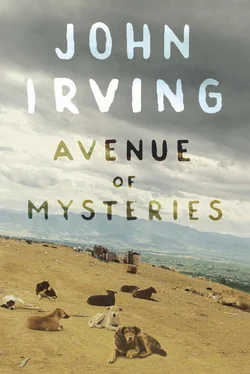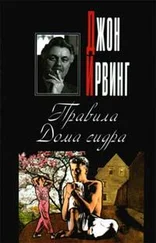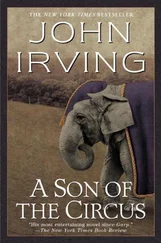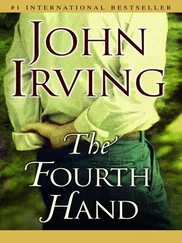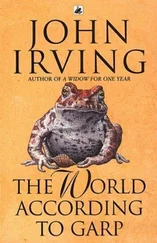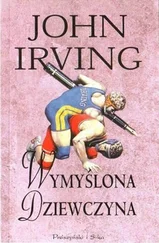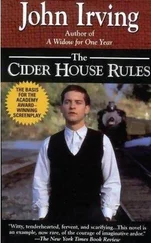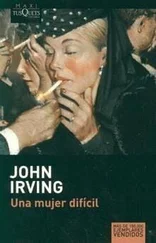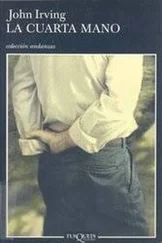For no known reason, the monasterio was closed, but Clark led his former teacher into the Guadalupe church — it was officially called Nuestra Señora de Gracia, Clark was explaining. Not another Our Lady — enough of the “Our Lady” business! Juan Diego was thinking, but he said nothing, trying to save his breath.
The image of Our Lady of Guadalupe had been brought from Spain in 1604; in 1629, the buildings of the church and monastery were completed. Sixty thousand Chinese rose in arms in 1639, Clark was telling Juan Diego — no explanation was given as to why ! But the Spaniards brought the image of Our Lady of Guadalupe to the battlefield; miraculously, there were peaceful negotiations and bloodshed was averted. (Maybe not miraculously —who said this was a miracle? Juan Diego was thinking.)
There’d been more trouble, of course: in 1763, the occupation of the church and monastery by British troops — burning and destruction ensued. The image of the Lady of Guadalupe was saved by an Irish Catholic “official.” (What kind of official came to the rescue? Juan Diego was wondering.)
Bienvenido had waited with the car. Clark and Juan Diego were alone inside the old church, except for what appeared to be two mourners; they knelt in the foremost pew, before the tasteful, almost delicate-looking altar table and the not-imposing Guadalupe portrait. Two women, all in black — they wore veils, their heads completely covered. Clark kept his voice low, respecting the deceased.
Earthquakes had nearly leveled Manila in 1850; the vault of the church collapsed amid the tremors. In 1882, the monastery was turned into an orphanage for the children of cholera victims. In 1898, Pío del Pilar — a revolutionary general of the Philippines — occupied the church and monastery with his rebels. Pío was forced to retreat from the Americans in 1899, setting the church on fire as he fled — furniture, documents, and books were burned.
Jesus, Clark — can’t you see there’s something wrong with me? Juan Diego was thinking. Juan Diego knew something was wrong, but Clark wasn’t looking at him.
In 1935, Clark suddenly announced, Pope Pius XI declared that Our Lady of Guadalupe was “patroness of the Philippines.” In 1941, the American bombers came — they shelled the shit out of the Japanese soldiers who were hiding in the ruins of the Guadalupe church. In 1995, the restoration of the church altar and sacristy was completed — thus Clark concluded his recitation. The silent mourners had not moved; the two women in black, their heads bowed, were as motionless as statues.
Juan Diego was still struggling to breathe, but the sharpening pain now made him alternately hold his breath, then gasp for air, then hold his breath. Clark French — as always, consumed by his own way with words — had failed to notice his former teacher’s distress.
Juan Diego believed he couldn’t possibly say all of Jeremiah 1:5; that was too much to say with how little breath he had left. He decided to say only the last part; Juan Diego knew that Clark would understand what he was saying. Juan Diego struggled to say it — just the “before you were born I set you apart.”
“I prefer saying ‘I sanctified you’ to your saying ‘I set you apart’—though both are correct,” Clark told his former teacher, before turning to look at him. Clark caught Juan Diego under both arms, or Juan Diego would have fallen.
In the commotion that followed in the old church, neither Clark nor Juan Diego would have noticed the silent mourners — the two kneeling women had only slightly turned their heads. They’d lifted their veils, no more than enough to allow them to observe the comings and goings at the rear of the church — Clark ran out to fetch Bienvenido; the two men then carried Juan Diego from where Clark had left his former teacher, lying in the hindmost pew. In such obvious emergency circumstances — and kneeling, as the two women were, in the forefront of the dimly lit old church — no one would have recognized Miriam or Dorothy (not all in black, and not with their scarves still covering their heads).
Juan Diego was a novelist who paid attention to the chronology of a story; in his case, as a writer, the choice of where to begin or end a story was always a conscious one. But was Juan Diego conscious that he’d begun to die? He must have known that the effort to breathe and the pain of breathing could not have been the Vietnamese beef, but what Clark and Bienvenido were saying seemed of little importance to Juan Diego. Bienvenido would have vented his opinion of the “dirty government hospitals”; of course Clark would have wanted Juan Diego to go to the hospital where his wife worked — where surely everyone would know Dr. Josefa Quintana, where Clark’s former teacher would receive the best possible care.
“As luck would have it,” Juan Diego may have heard his former student say to Bienvenido. Clark said this in response to Bienvenido’s telling him that the nearest Catholic hospital to the Guadalupe church was in San Juan City; part of metropolitan Manila, San Juan was the town next to Makati, only twenty minutes away. What Clark meant by “luck” was that this was the hospital where his wife worked — the Cardinal Santos Medical Center.
From Juan Diego’s point of view, the twenty-minute drive was dreamlike but a blur; nothing that was real registered with him. Not the Greenhills Shopping Center, which was fairly close to the hospital — not even the oddly named Wack Wack Golf & Country Club, adjacent to the medical center. Clark was worried about his dear former teacher, because Juan Diego didn’t respond to Clark’s comment about the spelling of Wack. “Surely one whacks a golf ball — there’s an h in whack, or there should be,” Clark said. “I’ve always thought golfers were wasting their time — it’s no surprise they can’t spell.”
But Juan Diego didn’t respond; Clark’s former teacher didn’t even react to the crucifixes in the emergency room at Cardinal Santos — this really worried Clark. Nor did Juan Diego seem to notice the nuns, making their regular rounds. (At Cardinal Santos, Clark knew, there was always a priest or two on hand in the mornings; they were giving Communion to those patients who wanted it.)
“Mister is going swimming!” Juan Diego imagined he heard Consuelo cry, but the little girl in pigtails was not among the upturned faces in the enveloping crowd. No Filipinos were watching, and Juan Diego wasn’t swimming; he was walking without a limp, at last. He was walking upside down, of course; he was skywalking, at eighty feet — he’d taken the first two of those death-daring steps. (And then another two, and then two more.) Once again, the past surrounded him — like those upturned faces in the watchful crowd.
Juan Diego imagined Dolores was there; she was saying, “When you skywalk for the virgins, they let you do it forever.” But skywalking wasn’t a big deal for a dump reader. Juan Diego had snatched the first books he read from the hellfires of the basurero; he’d burned his hands saving books from burning. What were sixteen steps at eighty feet for a dump reader? Wasn’t this the life he might have had, if he’d been brave enough to seize it? But you don’t see the future clearly when you’re only fourteen.
“We’re the miraculous ones,” Lupe had tried to tell him. “You have another future!” she’d correctly predicted. And, really, for how long could he have kept himself and his little sister alive — even if he’d become a skywalker?
There were just ten more steps, Juan Diego thought; he’d been silently counting the steps to himself. (Of course, no one in the emergency room at Cardinal Santos knew he was counting.)
Читать дальше
